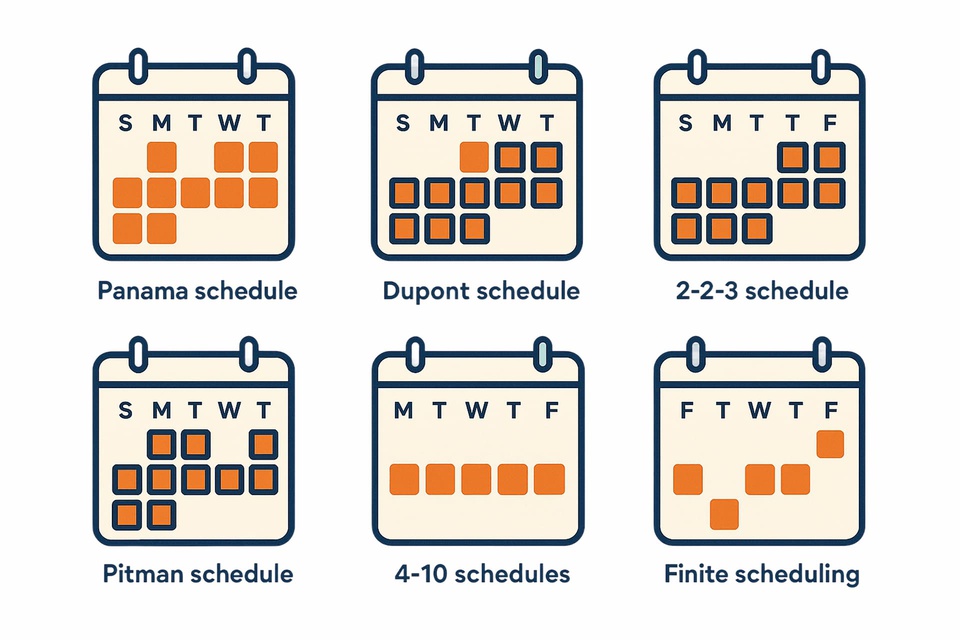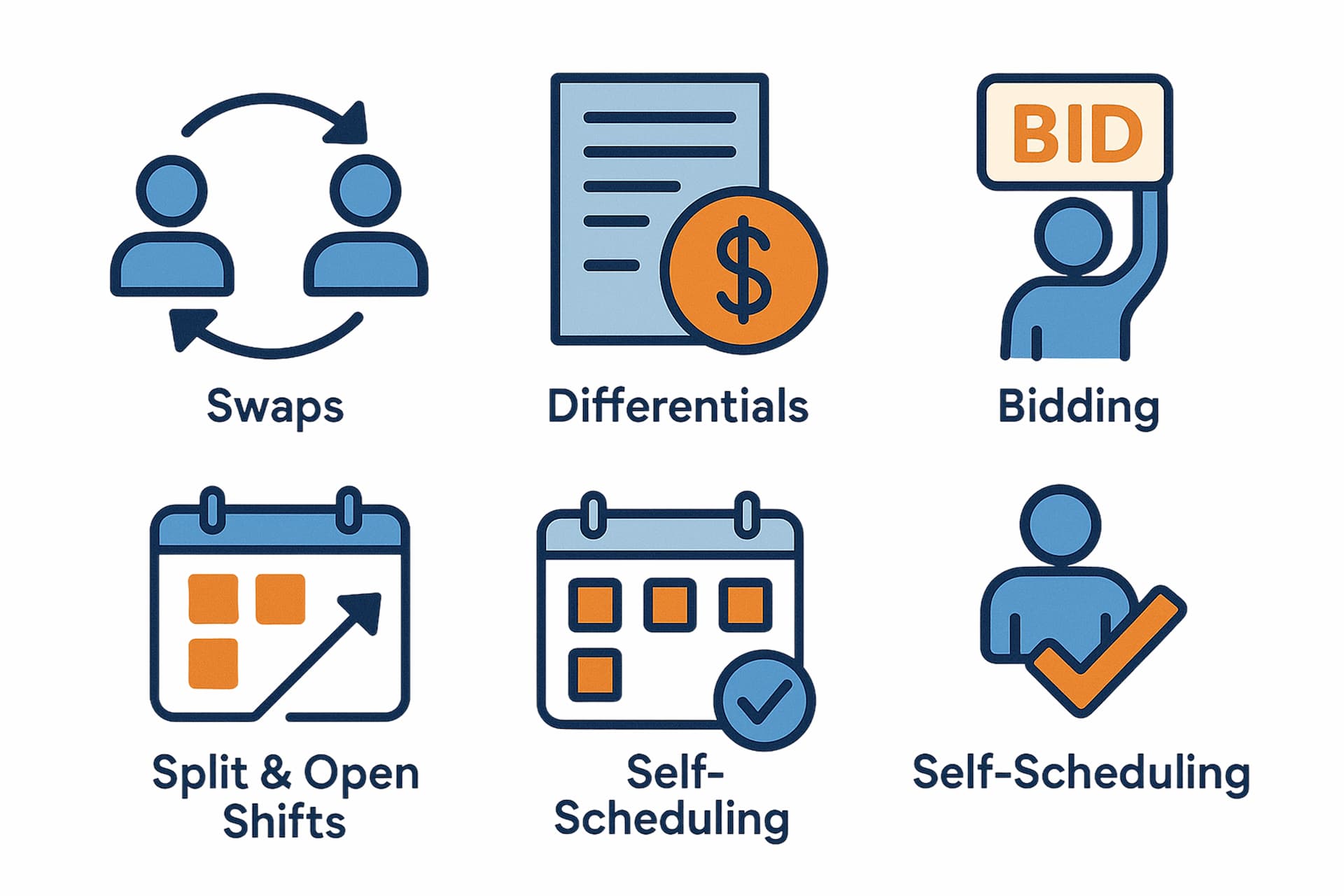What’s inside
Panama schedule
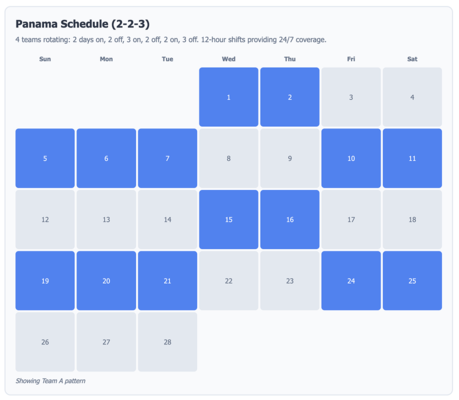
The Panama schedule, also called the 2-2-3 system, rotates employees in two- and three-day blocks across a 28-day cycle. It balances coverage and rest, but can be complex to manage.
Example: Fire departments and emergency services often use the Panama schedule to provide fair coverage while giving teams regular long weekends.
Interesting fact: In a 28-day cycle, employees get every other weekend completely off.
Want details? Read our complete guide to the Panama schedule.
Dupont schedule
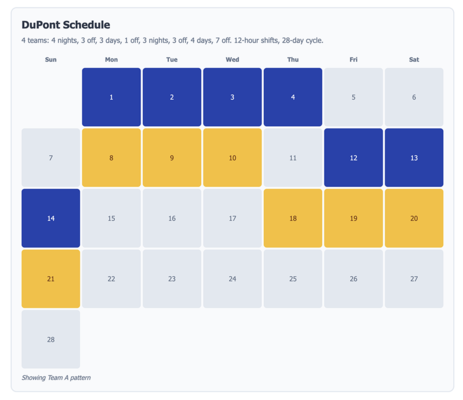
The Dupont schedule is a 12-hour, four-week cycle alternating between days and nights. It provides long rest periods, sometimes up to seven consecutive days, but requires extended shifts during peak weeks.
Example: Chemical plants favor the Dupont model because equipment must operate continuously.
Interesting fact: Employees on Dupont often end up with more days off per year than traditional 9–5 workers.
For a deep dive, see our Dupont schedule article.
2-2-3 schedule
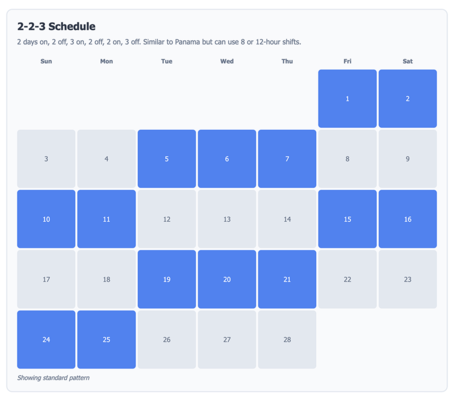
This variation of Panama rotates two days on, two off, three on. It’s popular in healthcare and logistics for its predictability.
Example: Hospitals and call centers adopt 2-2-3 to evenly distribute workloads and provide balanced coverage.
Interesting fact: Employees appreciate the 2-2-3 for its predictable long weekends and easier family planning.
Learn more in our 2-2-3 schedule guide.
Pitman schedule
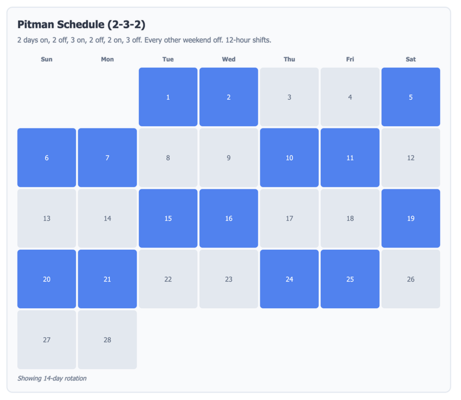
The Pitman schedule uses four teams rotating through 12-hour shifts, ensuring every employee gets every other weekend off.
Example: Police departments and dispatch centers rely on Pitman to ensure fairness while maintaining coverage.
Interesting fact: Pitman is often confused with Dupont, but its two-week cycle is simpler to manage.
Curious? Read our Pitman schedule explanation.
4-10 schedule
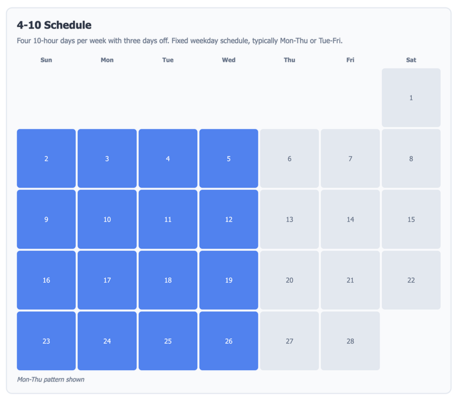
The 4-10 schedule compresses 40 hours into four 10-hour days, giving employees three consecutive days off each week.
Example: IT companies and startups like 4-10 because long weekends can improve morale and focus.
Interesting fact: Studies show productivity per day increases, though fatigue may accumulate by the end of the week.
See examples in our 4-10 schedule article.
Fixed schedules
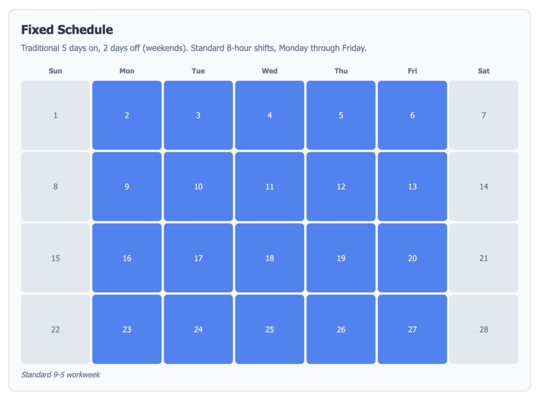
Fixed schedules assign the same hours and days every week, offering predictability but less flexibility.
Example: Retail stores and office jobs often rely on fixed schedules for stability.
Interesting fact: Employees on fixed schedules report lower stress levels compared to rotating shifts.
More details here: fixed schedule guide.
Finite scheduling
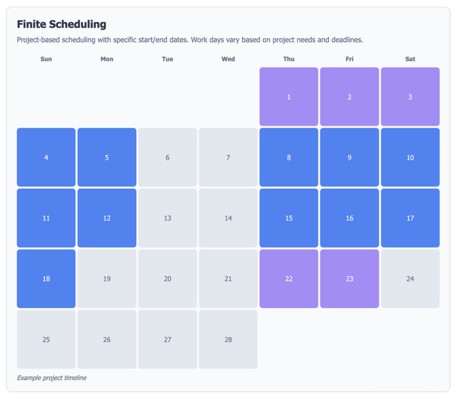
Finite scheduling plans work around limited resources, capacity, and demand. It’s widely used in manufacturing and supply chain operations.
Example: Factories apply finite scheduling to prevent bottlenecks and balance workloads.
Interesting fact: Finite scheduling principles are also applied in aviation slot management for landings and takeoffs.
Learn more in our finite scheduling post.
Benefits and drawbacks
Each schedule has strengths: Panama and Dupont ensure 24/7 coverage, Pitman emphasizes fairness, 4-10 offers longer weekends, and fixed schedules guarantee stability.
Downsides include fatigue from 12-hour shifts, scheduling complexity, and risks of burnout.
Where these schedules are used
Different schedule patterns fit different industries. Here’s where Panama, Dupont, 2-2-3, Pitman, 4-10, fixed and finite schedules are most commonly applied:
- Manufacturing: Panama, Dupont, 2-2-3 - keep production lines running 24/7 with rotating 12-hour shifts; 4-10 also appears in maintenance teams.
- Healthcare / Emergency Services: Panama and 2-2-3 dominate in hospitals and ER departments for doctors and nurses; fixed shifts are also common in outpatient clinics.
- Logistics & Warehousing: Panama and 2-2-3 for fulfillment centers and 24/7 trucking; fixed or 4-10 shifts used in regional hubs and delivery teams.
- IT & Call Centers: 2-2-3 and fixed shifts in customer support and NOC operations; Dupont less common but used in global monitoring teams.
- Security & Public Safety: Pitman (often called the “police schedule”), Dupont, and Panama ensure fair night/weekend rotations for police, firefighters, and private security.
- Hospitality & Restaurants: Fixed and 4-10 schedules are standard for kitchens, cleaning, and service crews; Panama is used in large resorts, casinos, and 24/7 operations.
Conclusion
Flexible work schedules like Panama, Dupont, and 4-10 help organizations operate 24/7 while providing employees structured rest. The best choice depends on industry needs, fairness, and employee wellbeing.
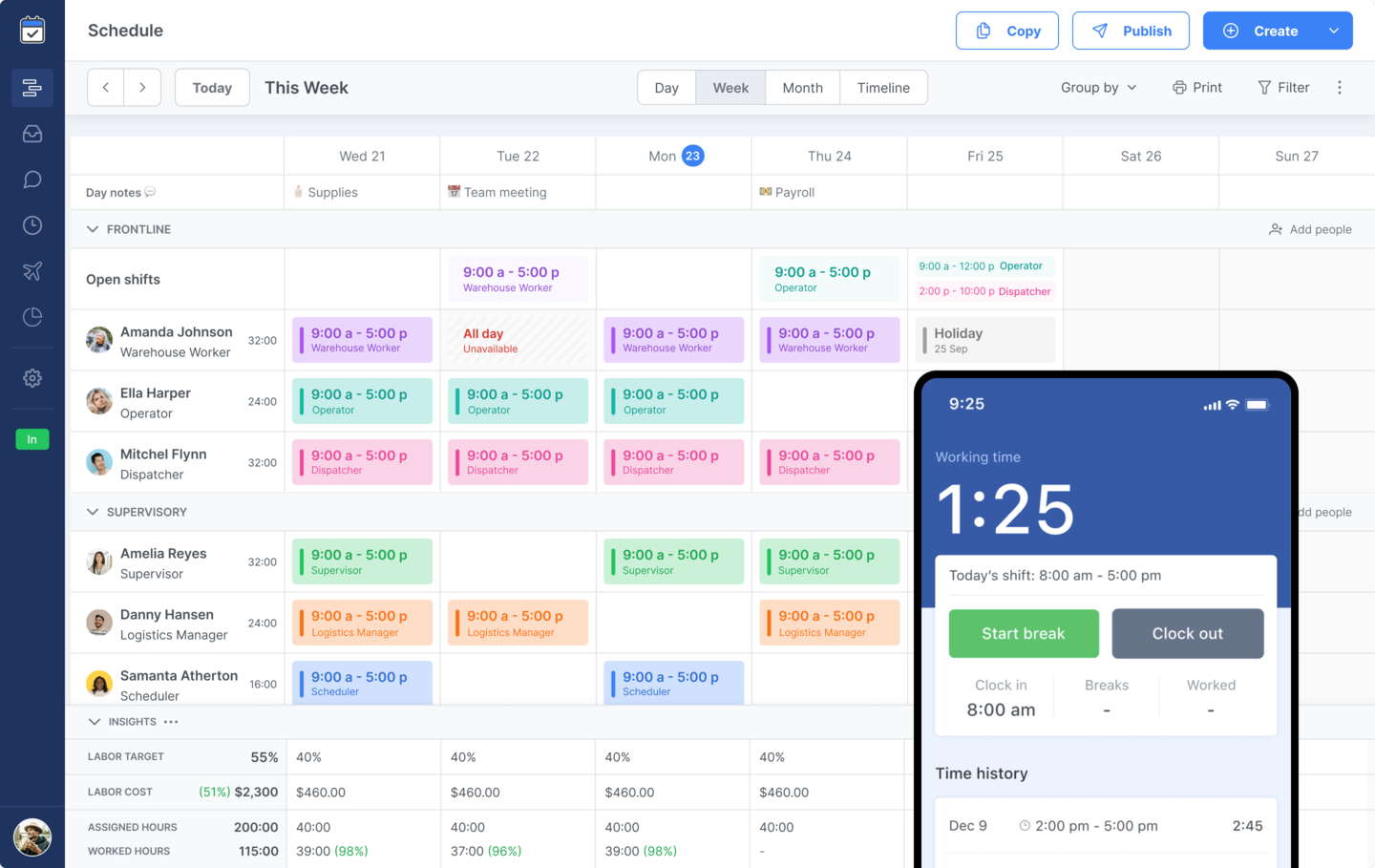
Want to simplify schedule planning? Try Shifts by Everhour and see how easy it is to build smarter rosters.
